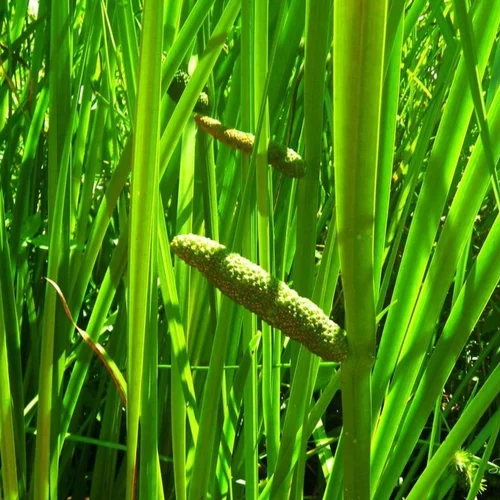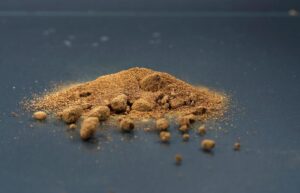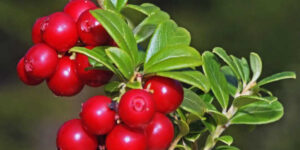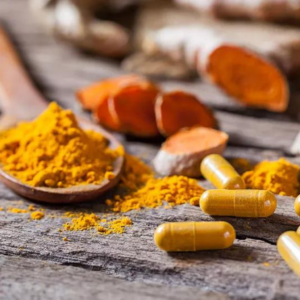Calamus
Root

Calamus Root, derived from the rhizome of Acorus calamus, is a well-known herb in traditional medicine and spiritual practices. Known for its aromatic properties, the root has been used for centuries in various cultures for its healing, culinary, and spiritual benefits. It has a distinct, spicy fragrance, which makes it a popular ingredient in perfumes and incense. The plant itself is found in wetlands and marshy areas, characterized by sword-shaped leaves and a tall, slender stem.
1. Size:
- The rhizome of the Calamus plant, which is harvested as Calamus Root, typically grows to a length of about 12 to 16 inches (30 to 40 cm) and has a diameter of 0.5 to 1 inch (1.3 to 2.5 cm). The plant can grow up to 3 to 6 feet (1 to 2 meters) tall.
2. Color:
- The exterior of Calamus Root is brown and rough, while the interior is white to pale yellow. When dried, the root may take on a darker, more golden hue.
3. Texture:
- The root is fibrous and tough when fresh, becoming more brittle as it dries. It has a smooth, slightly waxy texture when freshly cut, with a distinctive, spicy aroma released upon breaking.
4. Fragrance:
- Calamus Root has a warm, spicy, and slightly sweet fragrance, often described as a mix of cinnamon and ginger. This aromatic quality makes it a favored ingredient in incense and perfumery.
5. Uses:
- Calamus Root is traditionally used to treat digestive issues such as bloating, gas, and indigestion. It is also known for its calming effects and is used to alleviate anxiety and promote relaxation.
- In some cultures, Calamus Root is used as a flavoring agent, especially in liqueurs and sweets. Its pungent taste adds a unique flavor to various dishes.
- The essential oil extracted from Calamus Root is used in aromatherapy for its grounding and calming effects. It is believed to enhance mental clarity and reduce stress.
- Calamus Root has been used to treat respiratory conditions, including coughs and bronchitis, due to its expectorant properties. It is also used in herbal baths to soothe sore muscles.
6. Habitat:
- Calamus Root thrives in wetlands, marshes, and along the edges of rivers and ponds. It is native to Asia and Europe but can also be found in North America. The plant prefers moist, well-drained soil and partial shade to full sun.
7. Cultural and Spiritual Significance:
- In various cultures, Calamus Root has been associated with wisdom and spiritual insight. It was often used by shamans and healers to enhance mental clarity and connect with the spiritual realm.
- Calamus Root has a long history of use in religious and spiritual ceremonies. It was believed to ward off evil spirits and bring protection to those who carried it or used it in rituals.
Spiritual Properties
- Mental Clarity and Focus: Calamus Root is often used in spiritual practices to enhance mental clarity and focus. It is believed to help clear the mind and open the pathways to higher wisdom.
- Protection: The root is also considered a powerful protective herb, used to guard against negative energies and influences. It is often carried as a talisman or used in incense for this purpose.
Medicinal Properties
- Digestive Aid: Calamus Root is known for its ability to soothe the digestive system. It is often used to treat conditions like indigestion, gas, and bloating, as well as to stimulate appetite.
- Calming Agent: The root has mild sedative properties, making it useful for reducing anxiety and promoting relaxation. It is often used in herbal teas or tinctures for this purpose.
- Respiratory Support: Calamus Root has expectorant properties that help clear mucus from the lungs, making it beneficial for treating coughs, colds, and bronchitis.
- Antimicrobial: The root has antimicrobial properties, which make it useful in treating minor infections and preventing the growth of bacteria.
Allergic Reactions
Calamus Root is generally considered safe when used in moderation, but some individuals may experience allergic reactions.
- Skin Irritation: Direct contact with Calamus Root or its essential oil may cause skin irritation, including redness, itching, or rash, especially in those with sensitive skin.
- Respiratory Sensitivity: Inhalation of the root’s fumes, particularly when burned as incense, may cause respiratory discomfort in individuals with asthma or other respiratory conditions.
- Toxicity Concerns: Prolonged or excessive use of Calamus Root, particularly in its raw form, may lead to toxicity due to the presence of beta-asarone, a compound that can be harmful in large doses. It is advisable to use the root in moderation and under the guidance of a healthcare professional.
- Neurological Effects: High doses of Calamus Root may cause dizziness, confusion, or hallucinations due to its psychoactive properties. It is important to use the root responsibly and avoid excessive consumption.
- Nausea and Vomiting: Ingesting large amounts of Calamus Root may cause nausea or vomiting, particularly if consumed in raw or unprocessed form. It is best used in small, controlled doses.
- Headache: Some individuals may experience headaches after using Calamus Root, especially when using the essential oil or consuming the root in large quantities.

Chamomile Flowers
Chamomile Flowers Chamomile Flowers are small, daisy-like blossoms known for their soothing and calming properties. These flowers have been used for centuries in herbal medicine,

Lychee Berries
Lychee Berries Lychee Berries are tropical fruits known for their sweet flavor and distinctive appearance. They are highly valued in culinary applications and traditional medicine

Yellow Dock
Yellow Dock Yellow Dock, scientifically known as Rumex crispus, is a perennial herb known for its distinctive long, curly leaves and deep yellow root. It

Frankincense Powder
Frankincense Powder Frankincense Powder, derived from the resin of the Boswellia tree, is a revered substance with a long history of use in spiritual, medicinal,

Uva Ursi
Uva Ursi Uva Ursi, also known as bearberry, is a small, evergreen shrub that is prized for its medicinal properties, particularly in treating urinary tract

Turmeric and Cancer: The Role of Curcumin in Fighting Disease
Turmeric and Cancer: The Role of Curcumin in Fighting Disease Turmeric, a vibrant yellow spice, has been celebrated for centuries for its medicinal properties, particularly